nlp_intro
11. Cross-lingual transfer and multilingual NLP
Explanations and visualisations
- Crash Course Linguistics #16
- Language sampling
- Beto, Bentz, Becas: The Surprising Cross-Lingual Effectiveness of BERT
- The State and Fate of Linguistic Diversity and Inclusion in the NLP World
- No Language Left Behind: Scaling Human-Centered Machine Translation
- Connecting Language Technologies with Rich, Diverse Data Sources Covering Thousands of Languages
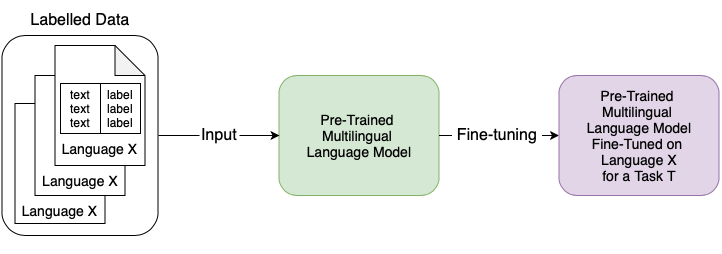
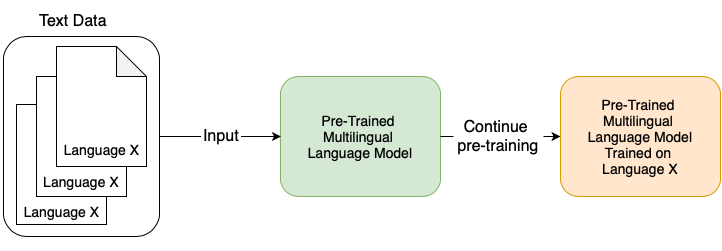
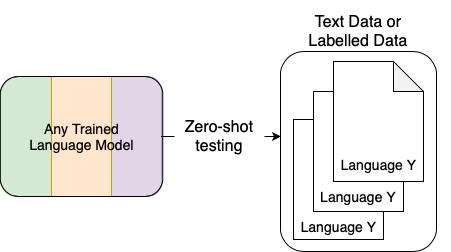
Cross-lingual transfer
- In principle, we can pre-train a model on one language and use it to process texts in another language
- Most often, we pre-train models on multiple languages and then use this multilingual model to process texts in any given single language
- Target language is the language in which we want to perform a task (process texts)
- Transfer language is the language in which we have a lot of labelled data, we fine-tune a pre-trained multilingual model on the transfer language and then apply it (often as zero-shot) to a different target language.
- Double transfer: when we transfer a model across languages and fine-tune it for a given task, there are two transfer steps, one across languages and one across tasks
- (Continued) training: if we have some unlabelled data in the target language, we can continue training the model with the pre-training objective before fine-tuning it for a given task
- Zero-shot: we attempt to perform a task without fine-tuning and continued training
- Pre-trained model can be a bare LM or trained/fine-tuned for a specific task
- An interesting example is the Helsinki team solution to the AmericasNLP task of translating from Spanish into low-resource languages: for each pair Spanish - TARGET, train a on Spanish - English for 90% of the time, then continue on Spanish - TARGET for 10% of the time, best results for all TARGET languages
Labelled vs. unlabelled data
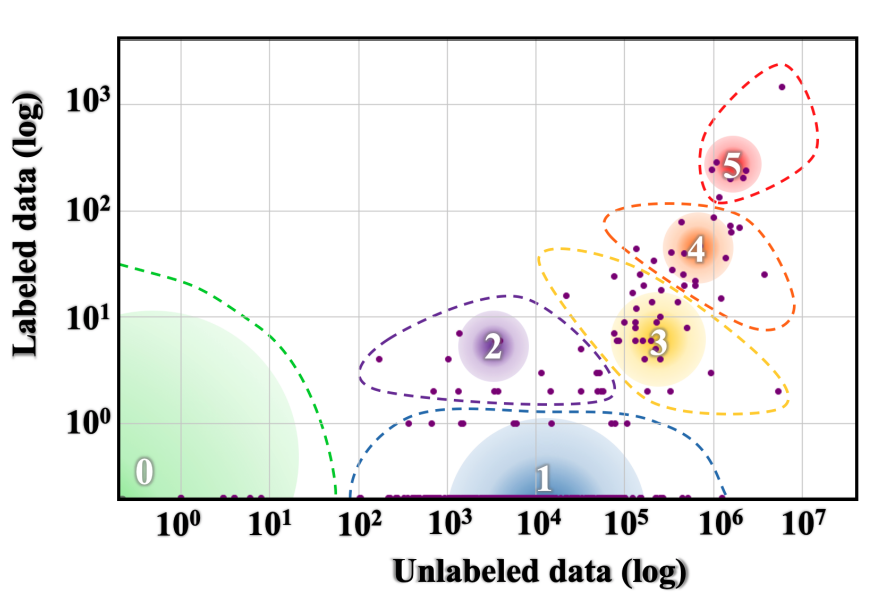
Source https://aclanthology.org/2020.acl-main.560.pdf
Examples of unlabelled multilingual data sets:
- Bible 100, 103 languages, 30 families, Majority non-Indo-European
- mBERT, 97 languages, 15 families, Top 100 size of Wikipedia plus Thai and Mongolian
Examples of parallel data (for machine translation), considered labelled
- OPUS, 744 languages
- FLORES+ (by NLLB), 222 languages
Examples of labelled multilingual data sets
- Text parsing tasks: Universal Dependencies (UD) v2.17 has 186 languages
- End-user tasks:
Many multilingual data sets are created from a selection of data taken from Common Crawl.
Examples of multilingual pre-trained models
- BERT-type
- mBERT was the first, trained on top 100 Wikipedia languages, plus a few arbitrary ones
- XML-R, a BERT-based model, currently most popular as a starting point for multilingual experiments
- GPT-type: BLOOMZ, Falcon, Phi, Llama, Gemma, Mistral, SILMA, Qwen, Apertus, Olmo
- Full Transformers: mT5
- Multiple encoder-decoder (not transformers): NLLB
Other pre-trained models are typically trained for a single language or a group of languages (e.g. Indic BERT, AraBERT, BERTić)
Multilingual tokenisation and script issues

Source https://tiktokenizer.vercel.app
- Multilingual tokenisers are trained over all languages in the data set, the resulting vocabulary is shared.
- Since the data size is very different, the shared vocabulary will be mostly filled with frequent words of languages with a lot of data (English)
- The structure of language also impacts the tokenisation: if words are shorter they are more frequent, more chance to be found in a multilingual vocabulary
- Oversegmentation happens when the shared vocabulary does not contain longer substrings of an input word, so it segments it into very short substrings
- Fertility is a measure showing into how many subwords words are split by a tokeniser, higher when words are long, rare, written in non-Latin script
- Parity is a measure showing how many (more) tokens there are in a sentence of a language compared to the equivalent English sentence
-
Subsampling is a technique used to balance the frequency of items in a multilingual data set: sample try to learn the tokenisation vocabulary from the same amount of data from all languages
- The script has impact too: non-Latin scripts are rare, words written in a non-Latin script will be overall rare, little chance to be found in a multilingual vocabulary
- There are four script types:
- Alphabet: roughly 1 sound -> 1 symbol
- Abjad: 1 consonant -> 1 symbol (vowels not marked or marked with diacritics)
- Syllabary: 1 syllable -> 1 symbol
- Logographic: 1 word (or 1 morpheme) -> 1 symbol
- Some examples of associations between writing systems and languages:
- Latin Alphabet: English, Finnish, Vietnamese, Swahili
- Cyrillic Alphabet: Bulgarian, Russian
- Greek Alphabet: Greek
- Abjad: Arabic, Hebrew
- Nagari Syllabary: Indic languages
- Kana (Syllabary): Japanese
- Hangul (Syllabary): Korean
- Chinese writing (Logographic)
- Kanji writing (Logographic): Japanese
Language similarity and transfer
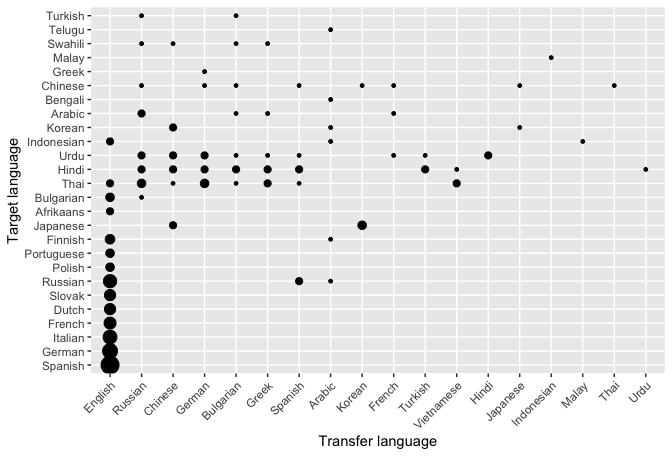
- If the target language is seen in pre-training, the performance will be better
- There is a trade-off between the size of the training data and the closeness to the target language
- It is not easy to predict which will be good transfer-target pairs
- Often BERT base (only English) works best even if the target language is very distant
Language features
- To measure distances between languages, we represent each language as a vector
- One-hot encodings are used as language IDs
- Three types of features:
- Metadata: number of speakers, geographical location, resource availability
- Typology: phylogenetic classification (which language family), structural descriptions from typological data bases: WALS, Glottolog, URIEL (derived from WALS, Glottolog and some other sources), Grambank; actual features in the existing databases need to be processed (converted into binary features)
- Text-based: e.g. character-level token-type ratio, word-level token-type ratio, average distance between space characters, median word length, text entropy, vectors learned from text samples (use a special language token)
Benefits of multilingual NLP
- Linguistic and machine learning: bigger challenges lead to better approaches, e.g. subword tokenisation
- Cultural and normative: better representation of the real world knowledge
- Cognitive: learn interlingual abstractions